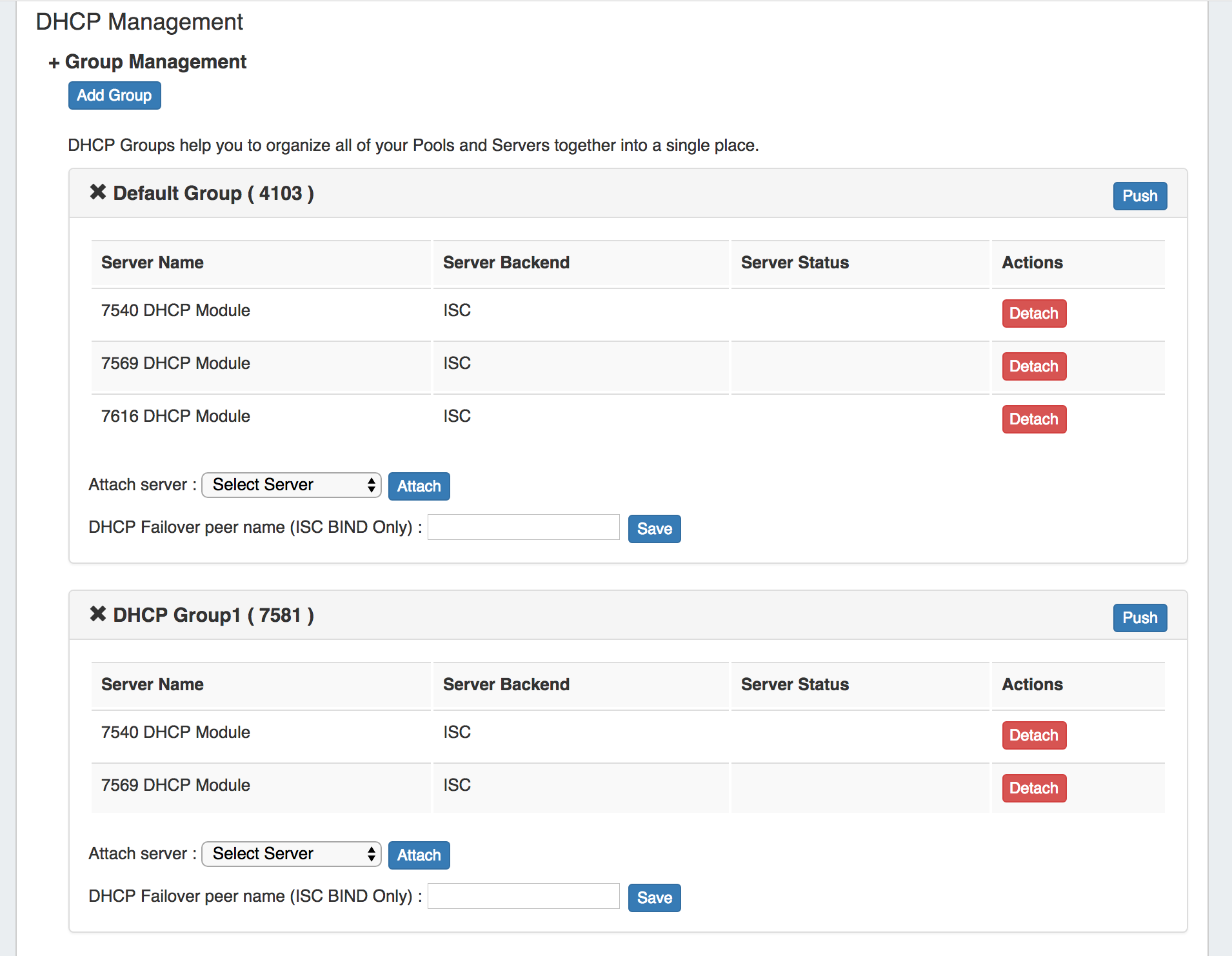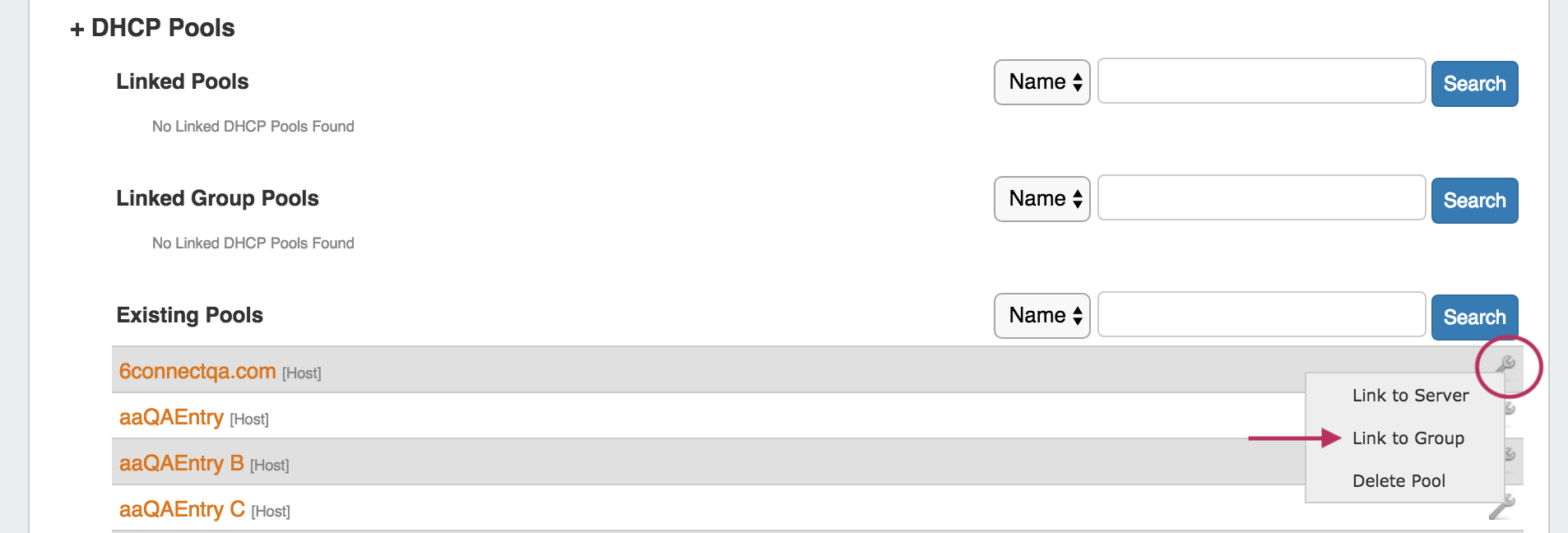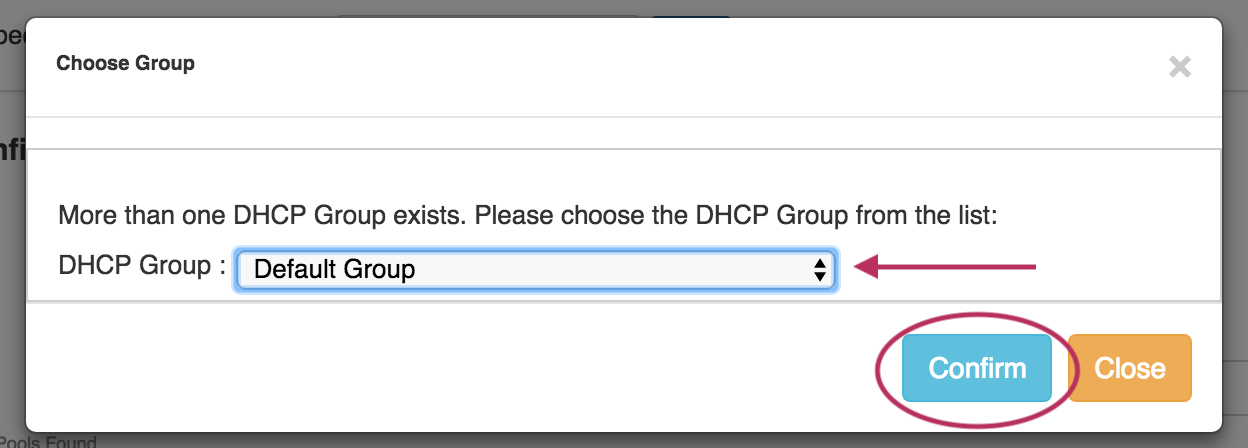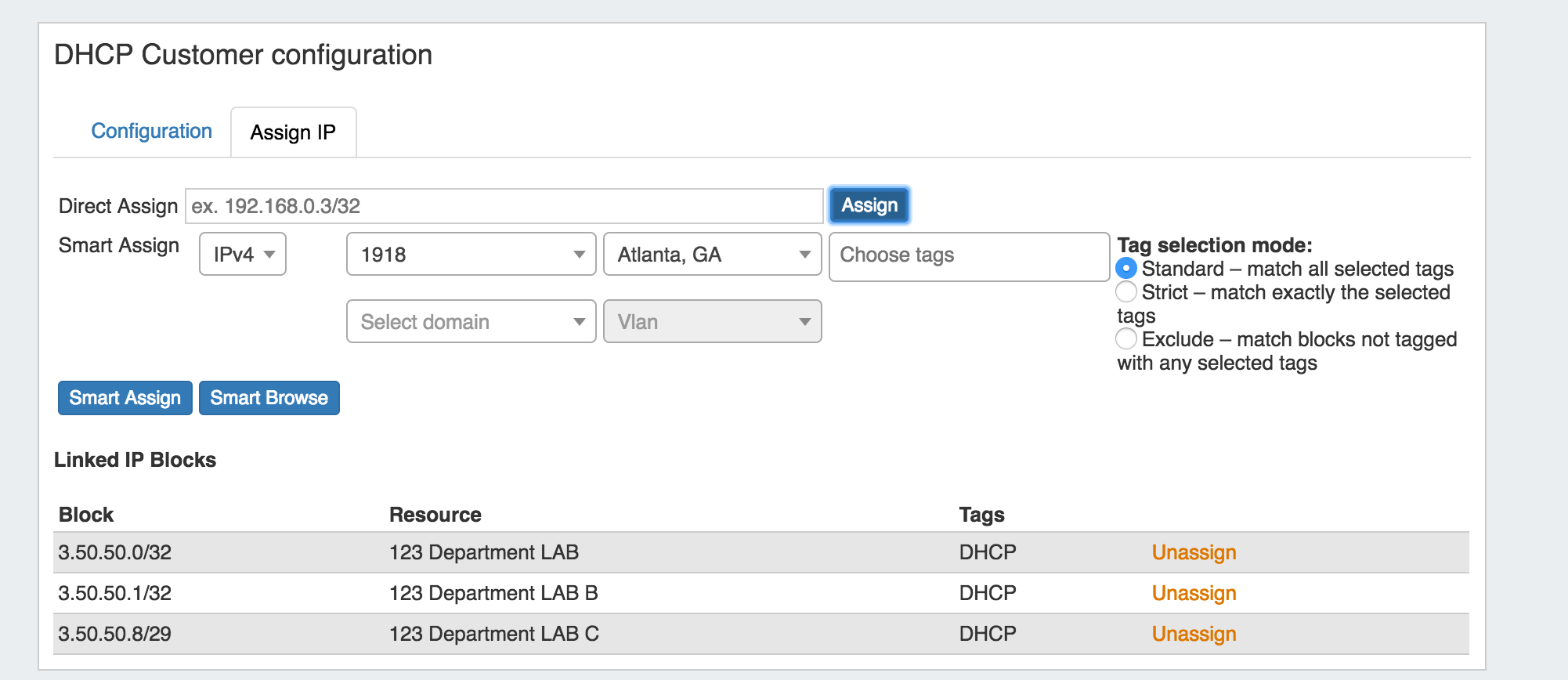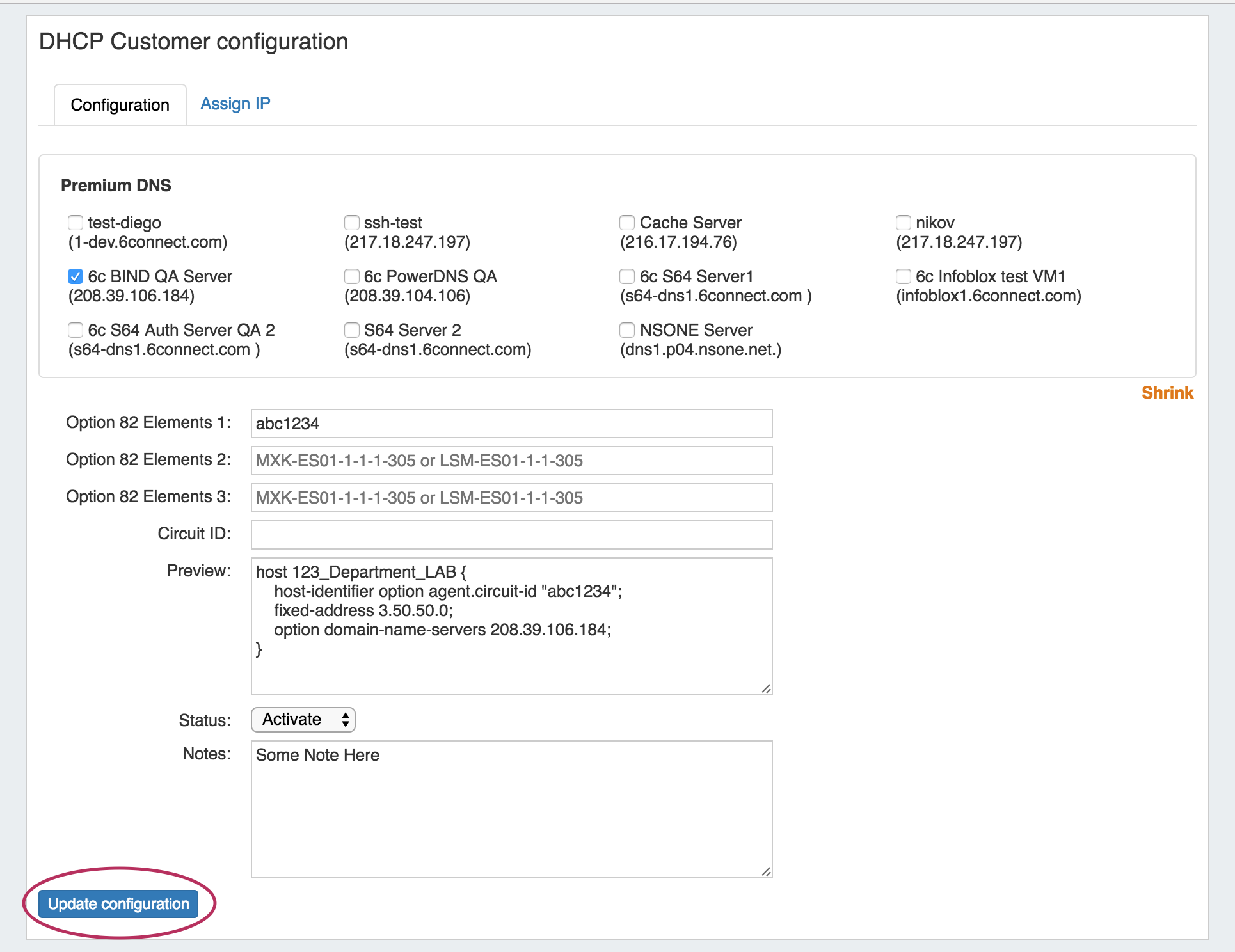...
| HTML |
|---|
<div id="google_translate_element"></div> <script type="text/javascript"> function googleTranslateElementInit() { new google.translate.TranslateElement({pageLanguage: 'en'}, 'google_translate_element'); } </script> <script type="text/javascript" src="//translate.google.com/translate_a/element.js?cb=googleTranslateElementInit"></script> |
Working with DHCP Gadgets
There are two DHCP Gadgets available to integrate onto a Resource Entry Page - the DHCP Management Gadget, and the DHCP Customer Configuration Gadget.
For an overview of Gadgets and how to attach them to Resource pages, see Gadgets and Adding a Gadget to a Section .
| Table of Contents |
|---|
DHCP Management Gadget (Legacy)
| Info |
|---|
Note: As of ProVision 7.0.0, the DHCP Management Gadget is a legacy feature. While it is still available to be used, we recommend checking out the updated DHCP Tab and using the DHCP Groups, DHCP Servers, and DHCP Pools pages as the primary DHCP management system. |
Before You Begin:
Attach / Enable the DHCP Gadget
Verify that the DHCP Gadget is attached to the Resource Section. Then, you can enable the gadget by selecting the radio button next to "On", and click "Update".
...
| Note | ||
|---|---|---|
| ||
ProVision versions prior to 7.0.0 required creating or identifying specific IPAM blocks as "DHCP Aggregates" using the "DHCP Available" status to assign DHCP pools from. As of 7.0.0, these statuses have been removed, and any IPAM block may be used to assign DHCP pools from, as long as they are subassignable and meet the assignment criteria provided by the user. This applies to all DHCP Management functions - the DHCP Management Gadget, DHCP Customer Configuration Gadget, and all DHCP Tab areas. |
Managing DHCP Server Configurations
Once DHCP functions are enabled for a Resource Section, you will be able to manage configurations per Resource by expanding the relevant areas on the Resource's Entry page.
Group Management
This section of the DHCP Management Gadget allows you to create and manage DHCP Groups.
DHCP groups help you to organize all of your Pools and Servers together into a single place, and push pools linked to a DHCP Group to all of the servers attached to that Group. It also allows for the designation of a DHCP Failover Peer for ISC BIND servers.
Working with DHCP Groups
Step 1: Create DHCP Servers
...
| Expand |
|---|
From the Existing Pools list under the DHCP Pools section, click the Action Menu for the pool you wish to link to a DHCP Group. From there, click "Link to Group". If multiple DHCP Groups exist, a dialog will pop up for you to select the desired Group to link the pool to. Select the DHCP Group, then click "Confirm" to add the pool to the Group. Once linked, the DHCP Pool will show under the "Linked Group Pools" area of the DHCP Pool section. From here, if desired, you may remove the pool from the group by clicking the Action Menu and "Remove Link".
|
Step 6: Push the DHCP Group
| Expand |
|---|
Lastly, click the "Push" button for the DHCP Group to push the linked pool(s) for the Group to the linked DHCP Module, and then push all DHCP servers linked to the Group. While pushing, a status box will appear to show status and any errors, if applicable.
|
Connection Configuration
In this gadget area, you may enter in the information that will be used for ProVision to communicate to the DHCP Server.
Server Details
Server details and advanced options may be entered under this portion of the gadget.
| Info | ||
|---|---|---|
| ||
A note on the Server Command: Config Test option: This command is run after the newly-written DHCP Config file has been transferred to the server but before the server is restarted. Due to the wide variety of DHCP install configurations that can arise on different systems, it is best if the Config Test option is as explicit as possible. For example: sudo /usr/sbin/dhcpd -t -cf /etc/dhcp/dhcpd.conf This command explicitly requests the DHCP daemon start in test-only mode (-t) with a specific config file (-cf). This config file should be the location supplied in the "DHCP Config File Path" section. |
...
Scan Server
Scan Server provides a "Scan Now" button, which scans the DHCP server and returns found IPs under DHCP Pools.
The returned IPs are divided by Pools and IPv4/IPv6. Returned fields include MAC address, IP address, and name. The percentage utilization of IP space out of the available DHCP Pool space is also included at the top of the list.
...
If the scan is unable to be completed, an error message will appear in the DHCP Management section.
DHCP Pools
In this area, the admin can specify what DHCP Pools are linked to the DHCP server or DHCP Groups.
...
Additional edits may be made to pools by clicking on the Pool name. This allows the Pool name, assignment, and lines to be changed. Be sure to hit "Save" after making changes.
DHCP Pool Search:
Both Linked and Existing DHCP pools have field-specific search options to filter the DHCP pool list(s). Select the search term type from the dropdown list, type the search term in the search box, then hit "Search".
...
For Existing Pools, additional filter terms may be included to further filter the IP search by Region or assigned Resource.
After entering your search terms, click "Search", and the pool list will filter to the results.
Create a New DHCP Pool - Subnets
When Assigning a Subnet (via dropdown) the IP Assignment selection will pull the data from any IPAM block meeting your defined criteria. You can use either a Smart or Direct assignment depending on your preference. For Smart Assign pool creation, existing IP Rules may be applied to reserve additional addresses out of the pool range. To create an IP Rule, see IPAM Rules.
| Info | ||
|---|---|---|
| ||
For DHCP Pools, ProVision automatically reserves the first and last address of the pool for Gateway and Broadcast addresses, respectively. If an additional IP Rule is applied, the rule will begin with the second address in the block. For example: if a DHCP Pool is created using 10.0.0.64/29 with an IP Rule of "Reserve First Three", the resulting pool range would be 10.0.0.68 through 10.0.0.70, as the first four as well as the final address would be reserved. |
Enter the name of the Pool / Subnet, and select the assignment criteria:
...
For Direct Assign: select IPv4 / IPv6 and enter the block in CIDR format, add free lines if desired, then click "Add Pool".
Create a New DHCP Pool - Host
When reserving Hostname/MAC data, change the Dropdown to "Host". This will also give you an option to assign from an existing DHCP block (smart assign) or a specific IP address (direct assign).
...
For Direct Assign: select IPv4 / IPv6 and enter the block in CIDR format, add free lines if desired, then click "Add Pool".
Current Pushed Configuration
Expanding "Current Pushed Configuration" allows you to view the detailed text (read-only) of the last sucessfully pushed configuration.
Current Pushed Configuration does not reflect any un-pushed changes or failed pushes.
Saving/Pushing DHCP Server Configurations
It is recommended that you save your configuration after changes. Save your changes by clicking the "Save Configuration" button at the bottom of the DHCP Management Gadget.
When you Push a Configuration (by clicking "Push Configuration") the configuration is automatically saved.
Working with the DHCP Customer Configuration Gadget
The DHCP Customer Configuration Gadget allows users to assign IP aggregates to the DHCP server pools and generate DHCP Server Configuration changes.
These configurations are then sent to the associated DHCP server Management Gadget as "Unpushed Configurations", where they may be held until a manual or schedule push occurs.
Setting up the DHCP Customer Configuration Gadget
Before using the DHCP Customer Configuration Gadget, the following should be set up in ProVision:
- The associated DHCP server should be created in ProVision and set up in the DHCP Management Gadget (See: DHCP Tab).
- Add the DHCP Customer Configuration Gadget to the desired Section. You may want to create a specific "DHCP Customer" Section for DHCP customer entries (See: Customizing Sections).
- Have, or set up IPAM Aggregates with subassignable blocks from the IPAM Tab with the desired IP space type, RIR, Region(s), Tags, and any desired VLAN criteria. Regions are a required field when assigning IPs from the DHCP Customer Configuration Gadget.
Using the DHCP Customer Configuration Gadget
Step 1) Link the Gadget with the desired DHCP Server
Step 2) Assign IP's for Pools from DHCP Aggregates
Step 3) Set up configuration information - add Option 82 Elements, Circuit ID, and notes. Use the "Preview" field to confirm the accuracy of the data, and select the status as "Activate" or "Terminate".
Once saved, the updated configuration will be sent to the DHCP Management Gadget.
Step 4) an admin user may manually push the updated configuration from the DHCP Management Gadget, or use a scheduled DHCP push task to automate the pushes.
See Gadgets - DHCP Customer Configuration for more details.
Additional Information
For more detail on advanced DHCP topics and the DHCP API, see API Module - DHCP.

